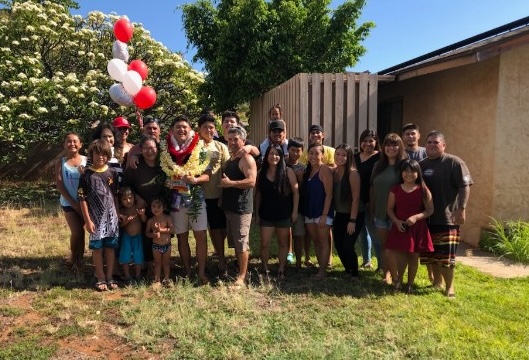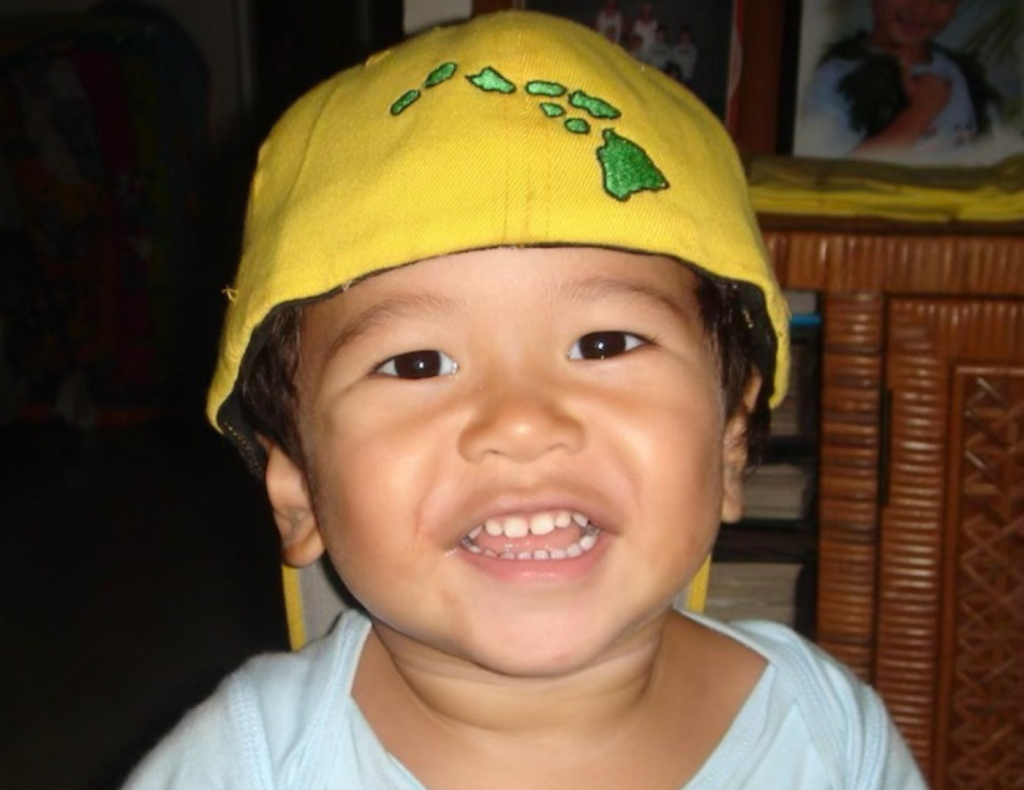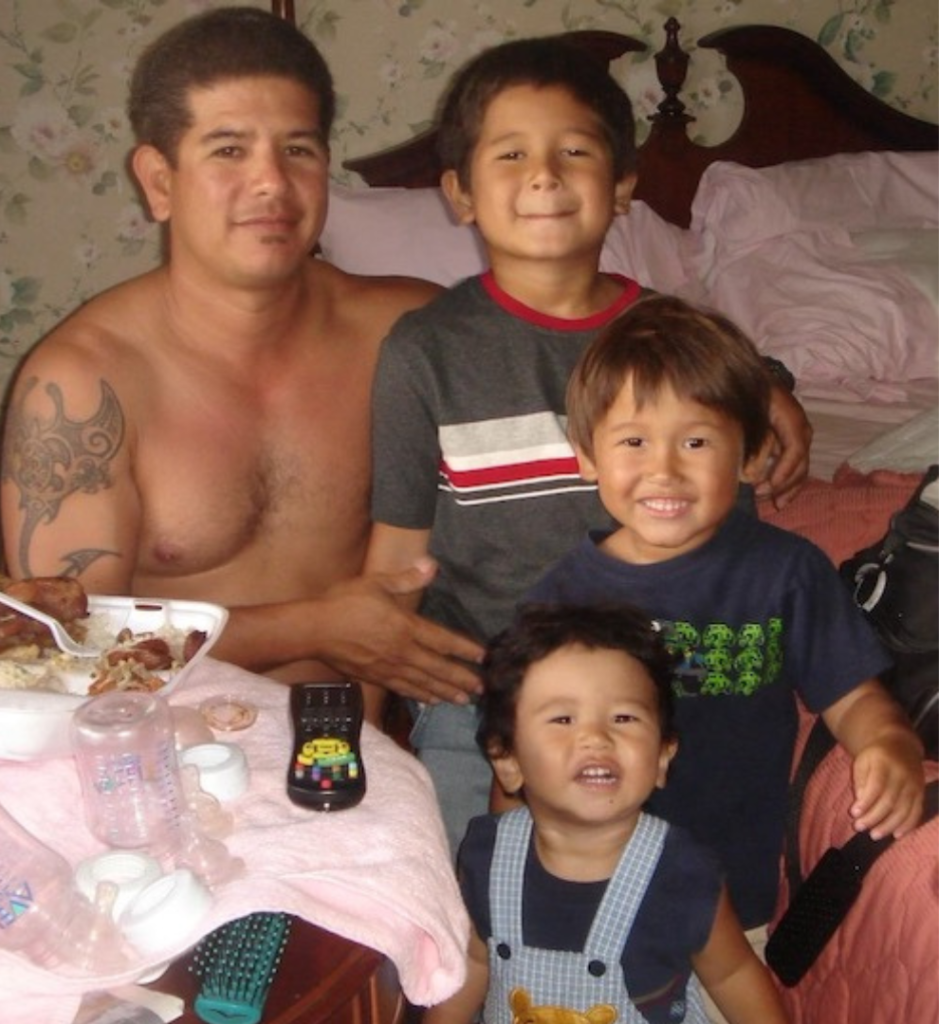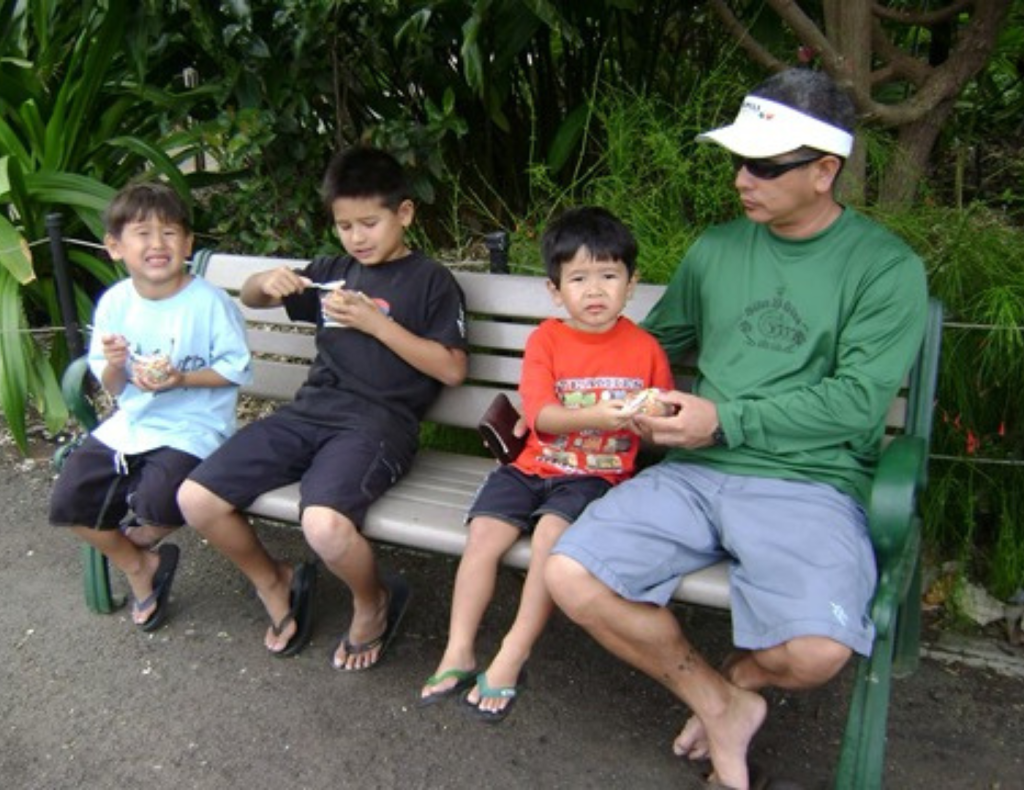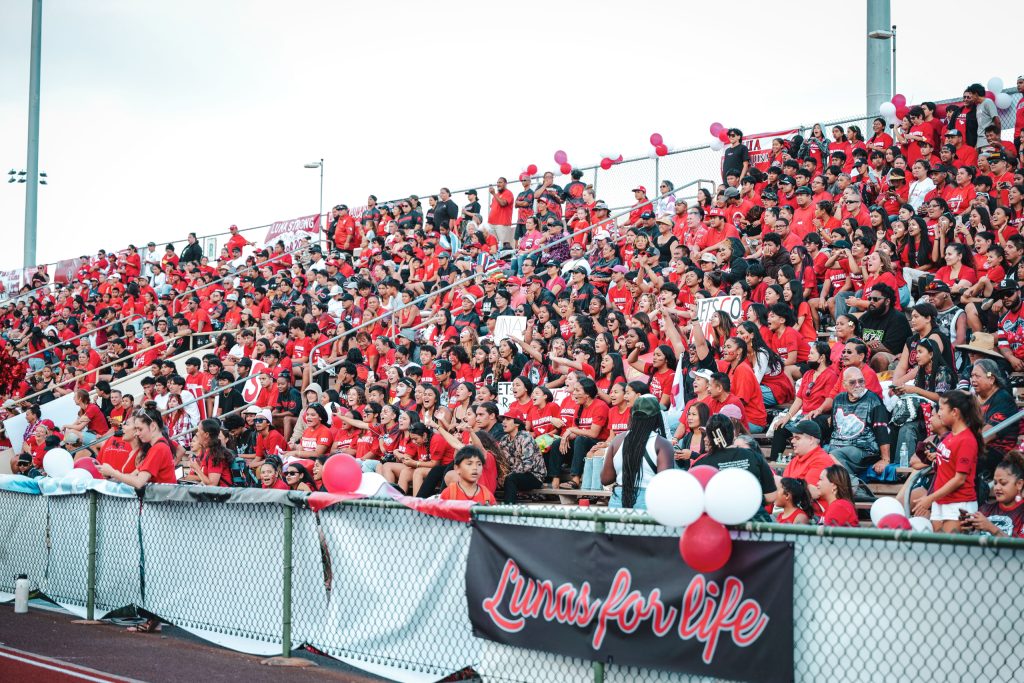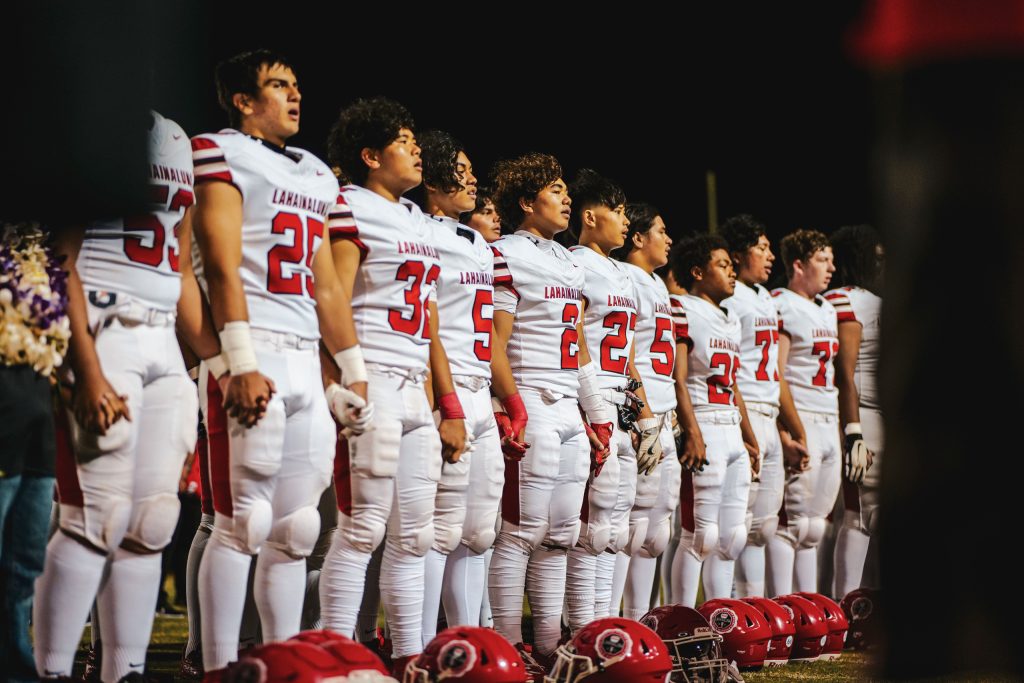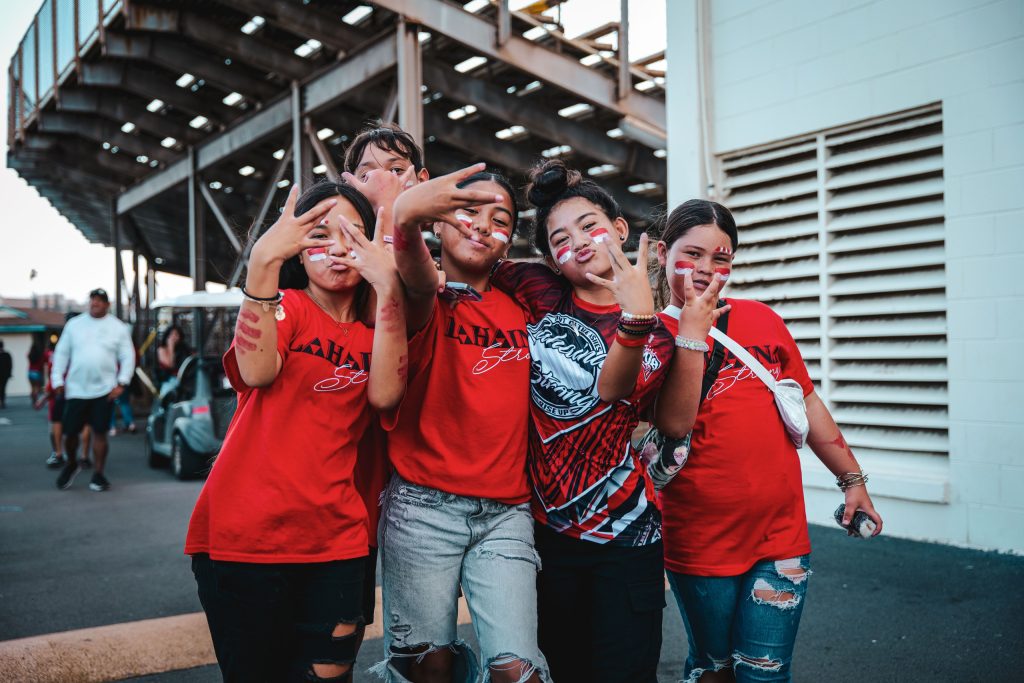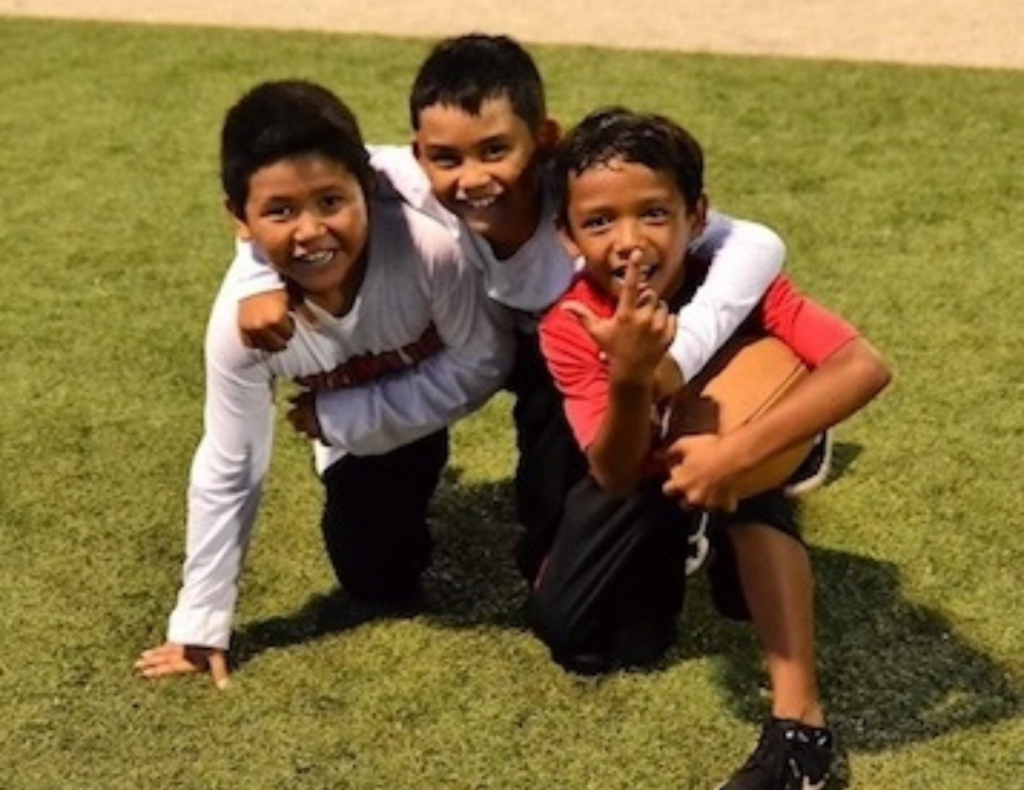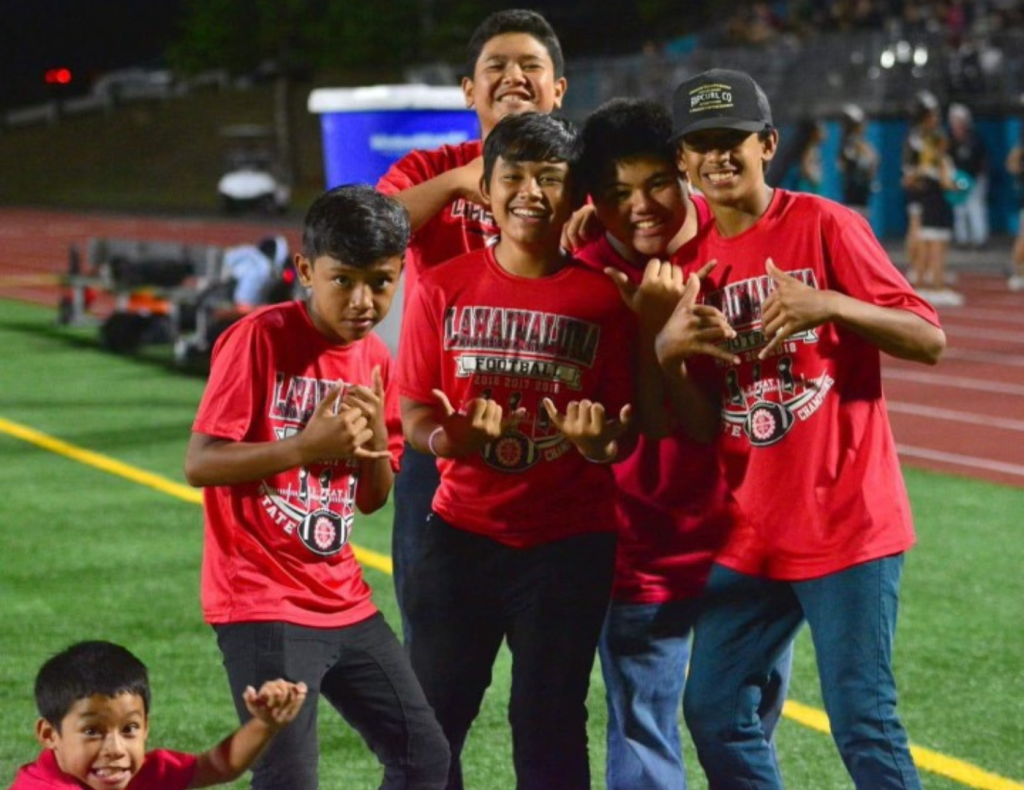By: Annaliese Gumboc
Kaulana Tihada grew up in a house in northern Lahaina Town, near Ka’anapali. The home, originally owned by his maternal grandfather, was inherited by his mother and became the heart of his upbringing.
When the fires devastated Lahaina in August 2023, Tihada’s home stood on the outskirts of the disaster, where the flames eventually subsided. According to Maui Now, the fire split his street in two—one side untouched, the other reduced to blackened rubble.
Tihada was home when the wildfires struck. With his mom and two older brothers elsewhere on Maui, it was up to him and his dad to pack up the family’s essentials. They grabbed clothing, irreplaceable mementos, awards, and photo albums. Tihada, then a rising senior, loaded one car while his dad took another. With their two dogs in tow, they left Lahaina, the town they loved, burning in the rearview mirror.
“I was definitely worried about all the people I couldn’t get in touch with, like my mom and my [brothers],” said Tihada. “But I knew that I had to stay calm…keep a close eye on what I can control.”
On the dry morning of August 8, powerful winds, driven by Hurricane Dora 500 miles offshore, swept across central and western Maui. These winds toppled trees, telephone wires, and utility poles, blocking crucial roadways.
At 6:35 a.m., a brush fire ignited near Ku’ialua Street and Ho’okahua Place. Firefighters fought the flames for hours and reported the blaze extinguished by 2:17 p.m., but a second fire flared up within forty minutes.
Fueled by the wind, the fire rapidly spread through Lahaina, destroying homes and historic buildings. The intense heat melted glass, while thick smoke blocked evacuation routes. Firefighters became trapped or had to abandon equipment tangled in downed power lines, and failing water pipes left fire hydrants dry. The flames, now an “urban conflagration,” reached Lahaina’s shore, burning until August 9.
That night, Tihada and his dad slept in an airport. Relief came when they finally contacted the rest of their family, confirming everyone was safe. However, they remained separated. With the highway closed, Tihada’s mom and brothers had to stay with an aunt, while Tihada and his dad found shelter with a coworker.
In the aftermath, confusion reigned. Rumors spread about what had or hadn’t burned as the death toll fluctuated—DNA tests later revealed that some victims were being counted more than once.
“After the fire, we didn’t know if our house was gone or not,” Tihada said. “People were saying different things, so we didn’t actually know how far the fire had reached.”
A few days later, Tihada learned the fate of his home when his mom returned to Lahaina. She sent him pictures of their house, now reduced to ash and wreckage. Belongings they’d left behind were destroyed. Tihada soon visited the ruins himself.
“Seeing my house after the fire was very devastating to me,” Tihada said. “You have all these memories of growing up in the house, and just seeing it like that after the fire, it was really sad.”
The Lahaina community grieved as students faced uncertainty about the upcoming school year. Tihada, a running back on the Lahainaluna High School football team, was unsure if he would have a senior season. Still, he gathered with his teammates to prepare.
“We weren’t even thinking we were gonna have a season,” said Tihada. “But in case we did, we just wanted to have lifting sessions with each other, with our old teammates. And it wasn’t just about lifting, it was more about reconnecting with friends and teammates, just seeing how they’re doing…like a reunion after the fire.”
When it was decided that they would participate in the season, the Lunas looked toward an uphill battle. The team would have to find a new place to practice while many players—including Tihada—struggled with displacement.
“It was definitely hard for some people, especially because…their living situations were hard,” Tihada said. “Some people were moving to the mainland, moving to different islands and different parts of the island, where it may be hard for them to get transportation to a certain place to practice.”
The Lunas also had to navigate a sudden surge of media attention, both locally and nationally.
“The press coverage was definitely new, and…it was a lot,” Tihada said. “We didn’t want the press and all the coverage to distract us from football.”
In the face of these challenges, several Lunas stepped up as leaders, both in the locker room and in the community. Tihada was one of them.
“Before the fire happened, I knew this was my last year, and I wanted to put everything into this season,” Tihada said. “But even more so after the fire, I knew football was more than just football. It became about uniting the community and providing a focus for our energy. It gave us a sense of normalcy amid the chaos of the fire.”
Understandably, the Lahainalunas missed a non-league match against Hilo, scheduled just a week after the fires. But when their first league match arrived on September 30, they were ready.
Despite the rest of the Maui Interscholastic League having a month’s head start, the Lunas showed no signs of rust as they faced the Baldwin Bears at Baldwin. In front of a crowd of 5,000, the Lunas dominated Baldwin, winning 42-0. Tihada caught a touchdown and ran in a two-point conversion.
The Lunas continued to steamroll their opponents, facing Baldwin again on October 21, this time on their own field. It was their first home game since the fires, and they capped off the emotional home opener with a 28-7 victory.
“Community members hadn’t seen each other for months until this game,” Coach Dean Rickard told Island News. “So it brought the town back together for that one night, for three or four hours.”
Lahainaluna remained undefeated throughout the season, earning a spot in the DI state semifinals. Their matchup against Kapaa was a nail-biter, going back and forth until the final whistle.
With 1:30 left to play, Tihada broke free for a 19-yard touchdown run, giving Lahainaluna a 28-21 lead. Kapaa responded with a touchdown and two-point conversion to retake the lead. In dramatic fashion, consecutive pass-interference penalties placed Lahaina on Kapaa’s 17-yard line with 8.4 seconds on the clock. With time for just one more play, Lahaina’s quarterback connected with Tihada over the middle, but he was stopped short of the end zone.
“It’s definitely heartbreaking, how it ended,” said Tihada. “We didn’t plan it to go that way. But we did practice our hardest, tried our best, and that’s all you can do.”
Despite the outcome, the season strengthened the Lahainalunas’ camaraderie.
“There were definitely a lot of challenges, but I think those just helped us build a stronger connection and a stronger bond with each other, even in times when we were arguing with each other,” Tihada reflected.
Tihada has experienced changes and new challenges he never anticipated before the fires. In February, he was even invited to Super Bowl LVIII as an honorary coin toss captain, along with some teammates and coaches.
“The Lahainaluna High School football team embodies the power of football to bring people together, even in the most challenging of circumstances,” stated Anna Isaacson, the NFL Senior Vice President of Social Responsibility.
Now, a year after the Maui fires, Tihada’s family still hasn’t found permanent housing. They move every few months, living a nomadic and impermanent lifestyle.
Several Lunas—including Tihada—are preparing to start college at the University of Hawaii at Manoa, which offered four years of free tuition to Lahainaluna High School’s Class of 2024. Tihada plans to study electrical engineering like his mom and will try out for the Rainbow Warriors alongside other former Lunas.
Tihada loves Lahaina. He grew up within its tight-knit community, spending time at the beach with friends and neighbors. He’s been around Lahainaluna football since he was little: His dad was a coach, and his older brothers were running backs for the Lunas. In elementary school, Tihada was their waterboy, and once he was old enough, he followed in their footsteps.
After surviving the Maui fires, Tihada faces new kinds of change: entering college, moving to Oahu, and possibly leaving football behind.
“It’s something new that I have to adjust to,” said Tihada. “Especially when you have football [as] a great part of your life, it’s definitely hard to let go of that and move onto something new…While I’m missing it, I’m excited to see what the future holds.”
